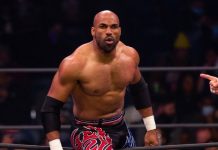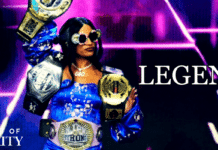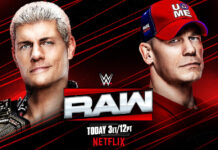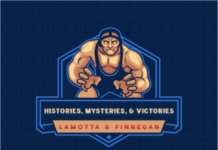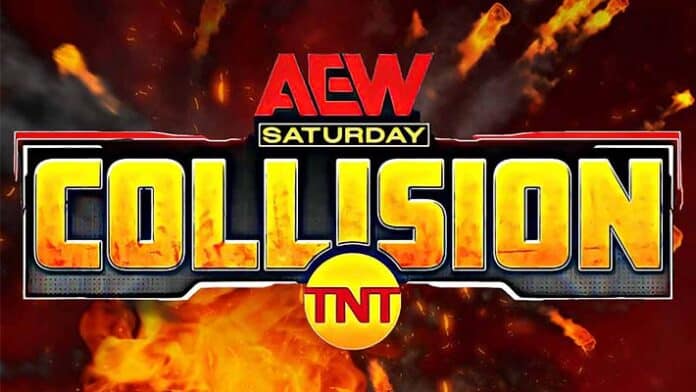
As I wrote in an article about the latest CM Punk debacle last week, which saw the former WWE and AEW champion removed from the press material for the launch of the new Saturday night show, Collision in June, Tony Khan should cut Punk if he refuses to return to work. In truth, there shouldn’t be negotiations to this, as Punk is still under contract to the organization and a flat out refusal would presumably be a breach of contract. Granted, Khan can’t force Phil Brooks to lace his boots, but it would at least give Tony some legal options in terms of withholding Brooks’ hefty paydays until he returns to complete the contract he signed. If Khan doesn’t enforce the contract in some form or fashion, even if that would freeze Punk from working else, what’s the point of the signed deal? Reportedly, one of the major reasons that the Warner Brothers Discovery network was willing to give the Khan-owned organization another two-hour time slot in prime time was that Punk, who recently recovered from the triceps injury he sustained at All Out last September before the infamous press conference, could be the center piece of the show.
I mentioned this when rumors of a third show first surfaced, but it should be noted that another two hours of programming could further dilute the product. While it’s great that the Turner networks have faith in sports entertainment again, especially after the disdain they had for it when World Championship Wrestling went from the highest-rated show on cable to out of business in the span of roughly three years, the common thread throughout pro wrestling history is how much TV executives don’t understand about the sport and more importantly, the distribution of content. You can’t use a broad brush with the approach to a pro wrestling television show because while it’s still scripted content, it’s a very unique genre so there’s not a paint-by-numbers technique to compare it or the ratings to other television shows.
Similar to other types of scripted content, pro wrestling draws its audience primarily because the fan base can connect with the characters on screen, the same way that the viewers rallied behind Walter White as the ill chemistry teacher that stumbled into drug dealing to provide a level of security for his family before he turned heel as the meth kingpin that saw his greed destroy his family under the Heisenberg persona. Jesse Pinkman, the burn out with no future, turned baby face as he showed a moral code through adversity. Steve Austin was the anti-hero of the WWF in a very similar way to how Omar Little robbed the drug dealers of Baltimore on The Wire.
The similarities are undoubtedly there, but it’s the stark contrasts, at least within the television business, that are key to be able to put the genre in proper perspective. Comparatively speaking, pro wrestling is relatively cheap to produce, as the “setting” for the program is usually contained to the same venue, and most importantly, pro wrestling is originally programming, which garners a better ad rate for networks than reruns of older shows. Considering that pro wrestling traditionally has a steady audience, that also gives networks a level of assurance for those ads rates since consistency is a valuable commodity within the TV industry. Advertisers are willing to pay for the commercial time if they know that a specific number of viewers will see their products.
However, those dynamics are based on the short-end money for the networks, not necessarily the longevity of the pro wrestling entity.
As noted, there are major differences between the traditional scripted show and a sports entertainment program. Most importantly, the personas on the wrestling show are continuous characters. The real-life Sammy Guevara doesn’t get to play a completely character different character the way an actor does when someone is cast in another role. Al Pacino was Micheal Corleone, but that had nothing to do with his role as Tony Montana. If you get an Pacino autograph, he doesn’t sign it “Frank Serpico,” a brilliant role that he played as a New York detective that stood up against corruption. Basically, pro wrestlers, despite the performance aspect of the sport, aren’t actors.
So, that’s why it’s extremely important for the prospect of another show be a positive for the company in terms of how it can progress not only the product, but the characters involved. All things considered, I’m honestly not sure if there’s any need or even a demand, outside of the network executives that want to sell commercial time, for more AEW content. Ironically, the bloated rosters, which would theoretically make more talent available for Collision, do nothing to help the situation. Too often, as we’ve seen with the four pillars angle ahead of this weekend’s pay-per-view, if a booker tries to get everyone over then nobody gets over. Does anyone honestly believe that any of the challengers look like they are going to beat MJF for the title? That’s because there wasn’t a specific focus for the segments on television. On a broader scale, that’s what happens with most of the current AEW television product. There’s a reason that those with the most consistent TV exposure are the competitors that are the most over in the company. Jon Moxley is considered by many to be an MVP of the promotion because the fans can see his dedication to consistent performances. When a talent disappears for several weeks or sometimes a few months at a time, they aren’t on the show enough to establish the previously mentioned connection with the audience. When Private Party were featured early in the existence of AEW, they started to generate a following, but as their involvement on the shows became secondary, they weren’t in the conversation of the fan base.
With Rampage already a completely secondary program that doesn’t have an impact in the grand scheme of things, which it has been for the bast majority of its existence, there’s no indication that Tony Khan could book another two-hour show that has a purpose or makes progress, especially when Dynamite still lacks logic on a semi-regular basis. One of the downsides of Tony’s E-fed approach is that booking isn’t simply putting names on paper. How is Collision going to compliment Dynamite and the company?
Judging from the Dynamite and Rampage numbers, both ratings that have decreased in recent months, there’s just not a demand for more AEW content. That’s not meant as a knock on the company, either. You have to keep in mind that in the modern era, there’s more competition for viewers than any other time in history with more entertainment options than any previous era. Traditional television is trying to maintain its foot print, streaming services that over saturated the market are trying to sustain themselves, there are countless free podcast options, and every other form of media that are trying to get viewers. The bottom line is, even the most diehard wrestling fans aren’t going to watch dozens of hours of sports entertainment programming to keep up with the national organizations. In some ways, that’s what made All Elite an easier viewing experience after its launch since there was only one weekly show that the audience had to watch to follow the product.
Finally, and this might be the biggest hurdle for Collision, even if Tony Khan tightens up the booking of the shows, the competition for viewers on Saturdays is going to be very difficult for the organization. Aside from the fact that a portion of potential viewers aren’t home on Saturdays, the other broadcasts that are scheduled for the weekend are usually major events. Fight cards and sports playoffs are going to be an uphill battle for AEW, especially because those events are the shows that have traditionally taken a portion of wrestling viewership since there are similar demographics. Are fans going to watch Collision if there’s a big time college game scheduled? Are viewers going to watch Collision instead of Conor McGregor’s eventual return to the octagon?
Sure, the traditional Saturday night wrestling from a few decades ago was great, but the argument could be made that it doesn’t apply to the modern era. The biggest concern I have, especially because I sincerely want to see All Elite be as successful as possible since it benefits the entire industry, is that Collision will essentially become what Thunder was to WCW. It’s well-documented from those that were there that the addition of the Thursday show was one of the key errors that prompted the company to decline. Keep in mind, more shows weren’t added to the wrestling line-up during the Attitude era until after the surge in popularity. Again, based on the numbers for Dynamite and Rampage, there’s not a demand for more All Elite content.
If Collision over saturates the market, it will have a domino effect that will dilutes the product and thus erode the importance of broadcasts across the board, which is what Thunder did to WCW during the era.
What do you think? Share your thoughts, opinions, feedback, and anything else that was raised on Twitter @PWMania and Facebook.com/PWMania.
Until next week
-Jim LaMotta
E mail [email protected] | You can follow me on Instagram & Facebook @jimlamotta89

